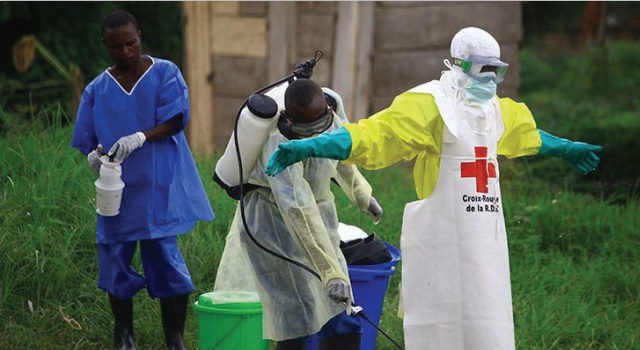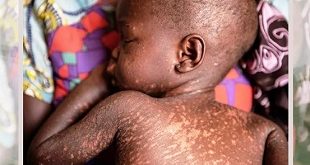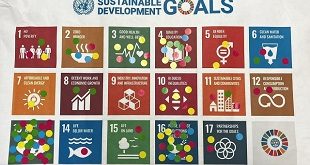
A look at incidence of hemorrhagic fevers, typhoid, HIV/AIDS, malaria
Kampala, Uganda | FLAVIA NASSAKA | As 2018 ended, the Minister of Health Dr. Jane Ruth Aceng, was on Dec.05 in Goma city in the neighboring DR Congo on invitation from her counterpart; Minister Sem Llunga.
Llunga must have noticed that Uganda has had five hemorrhagic fever outbreaks recently, mostly in western region close to the DR Congo border and at all times managed to control them shortly after they were confirmed. These include Ebola, Marburg, and Crimean – Congo fever.
The DRC minister wanted Uganda to show them how it is able to control the deadly Ebola hemorrhagic fever from spiraling out of control whenever there is an outbreak. For Aceng, it was another sign that the success of her ministry in controlling disease and infections was being noticed globally.
At the time Aceng visited, DRC was going through what experts are describing as the world’s second biggest Ebola outbreak. The DRC outbreak was declared in August and by December, 405 cases of the virus had been confirmed, with 267 deaths. There was fear it could worsen and become like the biggest case so far that happened in West Africa. Over two years, 11,310 people lost their lives of the 28,616 confirmed cases in West Africa.
Aceng and her DRC counterpart agreed that to contain Ebola, Uganda and DRC needed to have high level coordination mechanisms and a platform to address common challenges between the two countries. Uganda has not recorded a single case. To achieve zero cases, according to the Permanent Secretary in the Ministry of Health, Dr. Diana Atwiine, Uganda has had to flag hemorrhagic fevers as the health sector’s biggest challenge in 2018.
As the year started, the country had just been declared Marburg free in December 2017 following outbreaks in Kapchorwa and Kween districts in the Sebei sub region in eastern Uganda. Then Ministry of Health in January confirmed an outbreak of equally tough Crimean – Congo Hemorrhagic fever in the central district of Nakaseke after samples from a nine year old sufferer tested positive. The Crimean Congo fever threat remains as the year is ending. But the big threat has been the Ebola fever outbreak in DR Congo in August. Atwine says, as a result of that, the ministry has had to beef-up its High Hemorrhagic Fevers Surveillance Programme.
“We increased alertness, which comes with huge expenditure. At the border points for instance, we needed to start screening those who enter the country. We also had to ensure that the refugee camps and the border districts are guarded. We also resolved to vaccinate our medical workers, mobilisers and others,” she says, “I can’t put a figure to this and we are still spending. Most of this money is coming from donors.”
That costs a lot of money and resources. According to Atwine, the country had by December spent Shs4billion on the outbreak and more was still required. By March, Atwiine says the ministry had spent up to Shs5.2billion on managing Marburg alone.
And it is money well spent, according to Dr. Jimmy Opigo, the head of the Malaria Control Programme at the ministry. For him, the focus is on the experience the ministry accumulated from battling hemorrhagic fevers that is being used to keep other outbreaks at bay. He says the few cases like typhoid, cholera and malaria that sporadically came in were managed in a timely manner too. The Surveillance and Monitoring unit set up to monitor hemorrhagic fevers, in the process, also captured information on these diseases.
In Opigo’s docket of malaria, for instance, he says surveillance showed they needed to change approach from purely biomedical to a public health approach that was being used with the hemorrhagic fevers. He says they are now focusing on providing messages that emphasize behavioral action and also have involved President Yoweri Museveni and other politicians in campaigns like distribution of mosquito nets and how to use them, spraying of households and emphasizing testing before initiating treatment.
Opigo says even as malaria remains the biggest killer, the number of deaths recorded from January 2018 to end of September 2018 was 1,600 and yet by end of 2017 they had recorded more than 5000 deaths. That is a 70% drop.
Hospital admissions, according to weekly malaria status reports Opigo gets from districts show a decrease in severe malaria. Even facilities have unused stocks of anti-malarial drugs of up to a year. Opigo is excited.
“Supply from Global Fund for malaria was cut by $10m. One would have expected a stock out but health facilities are telling us they have excesses of anti malarials,” he says.
He says the Ministry of Health can tick off the numbers because it came up with a system of tracking and counting all medicines.
The Ministry of Health on Dec.11 launched the Uganda Malaria Indicator Survey (UMIS) to survey 9000 households across the country to provide the latest statistics on incidence, prevalence and transmission patterns of the disease as well prevention countrywide. Opigo is optimistic.
HIV drugs available
Generally, the budget for drugs and supplies was also enhanced by 18% to Shs41 billion. Even in HIV where there have always been strikes over stock outs, only a few of such stories came up. The major complaint by people living with HIV had to do with a supplementary drug Septrin whose stock out still was largely due to guideline changes where government resolved to withdraw those that are suppressing their viruses from the drug.
Kenneth Mwehonge, an Advocacy Officer with a local NGO – HEPs Uganda that monitors availability of essential drugs says the country scored highly on providing essential drugs as most of the facilities they monitor did not report a stock out. Only contraceptives were affected by a move by a US donor agency USAID to cancel a grant of the country’s biggest provider Uganda Health Marketing Group (UHMG) in June over fraud allegations.
Still, Mwehonge points out, a lot of people continued buying their drugs out of pockets as only 50% of the country’s drug needs are financed by donors and government. To him, this is a risk and that as we go into 2019, the government should be thinking about how to sustain the good gains made in 2018 especially in terms of keeping out breaks at bay and minimizing stock outs with these high levels of out of pocket expenditures on healthcare. He says we are bound to lose the gains if the government doesn’t quickly put in place the national health insurance scheme, well equipped medical facilities and ensuring that there are enough human resources for health that are well facilitated to man them.
Mwehonge’s worry can be seen at the newly opened Mulago Maternal and Neonatal Hospital. At its grand opening in October, healthcare managers signaled that it would offer world class service and be a solution to the still high maternal mortality rates at 336 deaths per 100,000 births and cut child mortality rates.
The reality at the facility now is one of only few doctors handling thousands of waiting patients some referred and others not. As one of the desperate measures, administrators have now resorted to sharing doctors with other government facilities; especially at Kawempe General Hospital which equally exclusively handles reproductive and maternal health issues.
Atwiine acknowledges this challenge and says training and staffing of more health workers is high on agenda for 2019 now that even the renovations at the main Mulago hospital are complete and is expected to open next month.
For her, they wanted to initially tackle welfare issues of those already employed. This year the government increased salaries medical workers with now a senior consultant earning shs4.5million from Shs3.5million, a consultant earns Shs4.2million from Shs2.6million whereas a medical officer earns Shs3million.
This followed strikes by health workers in November and December 2017 where they vowed not to return to work unless they have supplies, good housing and an enhanced salary. Their strikes hit hospitals so hard that government in April threatened to import doctors from Cuba to fill the gap something that was opposed by sections of the public; including civil society organisations and trade unions. The proposal of bringing in Cubans was put on hold because they thought salary enhancement would improve efficiency.
But according to the Minister for Health Dr. Ruth Aceng this appears not to have happened. “We are hearing this is not the case,” she told The Independent in an interview.
 The Independent Uganda: You get the Truth we Pay the Price
The Independent Uganda: You get the Truth we Pay the Price



